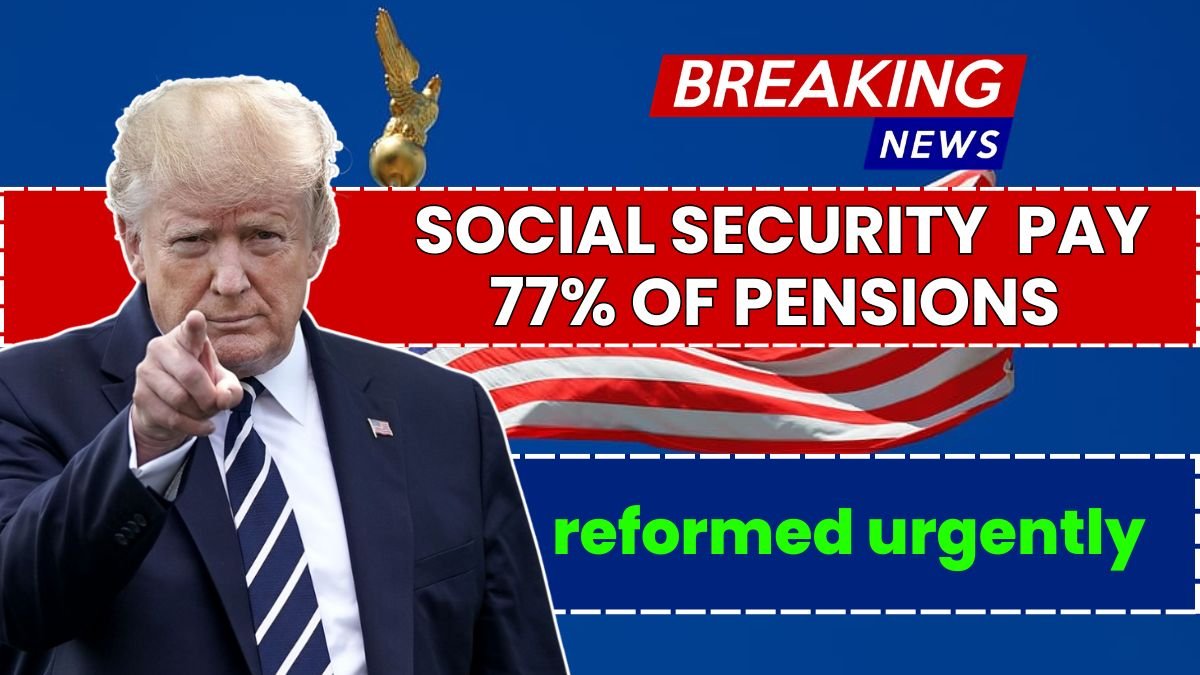Just imagine – you worked hard all your life, got taxes deducted from your monthly salary and believed that when you grow old or are unable to work due to some illness, a government scheme called “Social Security” will help you. But now imagine that you suddenly come to know that the fund on which you were going to depend at the most important time of your life may not be able to provide full help!
Yes, this fear has taken root in the minds of millions of people in America today. The future of Social Security is in danger, and if something big and decisive is not done in time, then after 2033 people will not get their full pension – only 77% will be paid.
In this article, we will know in detail what exactly is this Social Security, where does its money come from, why is it in crisis, and what are the options available to save this system.
What is Social Security and why has this crisis come?
Social Security is a government social security scheme of America, which provides financial assistance to people after their retirement or in case they are unable to work due to a serious illness. This scheme is a financial support for the elderly, disabled and the families of deceased workers.
But now a serious crisis has arisen in front of this scheme. The trust fund from which this scheme is operated is getting empty much faster than expected. According to experts, if no major steps are taken immediately, then by 2033 the money of a main fund of Social Security will end. After this, the government will be able to pay only 77% – that is, if a person should get $ 100 every month, then he will get only $ 77.
Where does social security get there money from.
The funds for Social Security come from three sources:
Paycheck Tax: A certain percentage is deducted from the salary of every American employee as tax. This is called FICA tax.
Tax on Social Security benefits: People who are already receiving Social Security benefits are also taxed on their payments.
Interest income: Part of the Social Security fund is invested in government bonds, which earn a small amount of interest.
This money is deposited in two main trust funds:
Old-Age and Survivors Insurance (OASI) Trust Fund: This makes payments to retirees and their dependents (such as a spouse or child).
Disability Insurance (DI) Trust Fund: This provides assistance to people with disabilities.
What happens if the money runs out?
If the OASI fund is empty by 2033, the government will only be able to pay 77%. If both funds (OASI + DI) are combined, all benefits can be paid in full until 2034, but only 81% will be available after that.
Example:
If you should get a $2,000 monthly pension in 2033, you will get only $1,540. This is not only a matter of concern for the current retirees, but also a big blow for the coming generations.
What is the solution to this crisis?
Many possible solutions have been suggested to avert this crisis, the most prominent of which is – increasing taxes.
Current situation:
At present, American workers pay 12.4% FICA tax (half paid by the employer, half by the employee).
If the plan is to be kept running for the next 75 years:
The tax will have to be increased to 16.05%. This means that an average American worker will pay $110,000 more tax for Social Security in his lifetime.
If the plan is to be made secure forever:
The tax will have to be increased to 17.6%, which will result in paying about $500,000 extra tax.
What is the opinion of experts?
Economists and experts of social schemes believe that maintaining Social Security as it is will be very heavy for the coming young generations. If no immediate action is taken, this burden will become unbearable.
A new proposal:
Two US senators have suggested that the government create a new fund in which $1.5 trillion dollars should be invested. This fund will be invested in the stock market and other high-return instruments, so that a stable and more profitable system can be created for the future.
They say that now is the time when we can deal with this crisis. If there is a delay of 5-10 years, then this crisis will become very deep.
Why is it important that we all understand about it?
Social Security is not only for retired people. It is for every person who works or is going to work in the future. Today we may be young, but tomorrow when we are old, this scheme will be our only support.
Therefore, some important questions arise for all of us:
- Should taxes be increased?
- Should Social Security be funded by investments in places like the stock market?
- Should current benefits be reduced to ensure that the program survives in the future?
Conclusion:
Social Security is a landmark American policy that has improved the lives of millions of people. But now the future of the program is at risk.
2033 is not a distant dream — it is just a few years away. Government, policymakers, and ordinary citizens must make immediate decisions.
Because if we remain silent today, tomorrow our older generation will have only promises in their hands — not reality.
FAQs
1. What is Social Security in the United States?
A. Social Security is a federal government program that provides financial support to retired individuals, people with disabilities, and survivors of deceased workers.
2. Why will Social Security only be able to pay 77% of benefits by 2033?
A. Due to an aging population, lower birth rates, and insufficient funding, the Social Security trust fund is depleting faster than expected. Without reform, only 77% of scheduled benefits can be paid starting in 2033.
3. What happens if no action is taken before 2033?
A. If no reforms are made, the Social Security trust fund will be partially exhausted, leading to an automatic benefit cut — recipients may only receive 77% of their full benefits.
4. Does this mean Social Security is going bankrupt?
A. No, Social Security is not going bankrupt. It will still collect taxes and continue to pay benefits, but at a reduced level unless changes are made.
5. How is Social Security currently funded?
A. It is primarily funded through payroll taxes (FICA), taxes on benefits, and interest earned on the trust funds.


